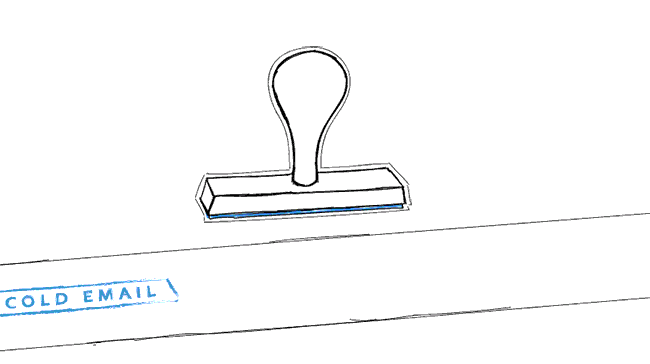A follow-up email is an integral part of any cold email campaign. But is one enough? When should we send it? Should we personalize it? I decided to look into data and answer some of those questions. Today I bring you the results of my research. Time for some numbers.
Follow-up emails are required

I learned that if you don’t follow up on your opening email, you can reach 9% reply rate on average. However, if you add at least one follow-up message to your email sequence, your average reply rate goes around 13%.
When it comes to the most experienced users, the percentages are higher. In this case, those who send only one email without follow-ups achieve a 16% reply rate on average. In comparison, users who send at least 1 follow-up in a campaign reach 27%.
Even without analyzing the content and the schedule of follow-up emails, it gives you solid evidence of how important they are in your outreach strategy.
Learn more: Why Should You Always Follow Up?
How many follow-up emails after no response to your initial email?
The most optimal number is 2-3 follow-up emails

From what I’ve gathered, sending 2-3 follow-up emails is the most optimal. Top performers usually send just that, and if you compare it with our last year’s blog post: What we’ve learned from sending 20+M Emails, it seems nothing has changed.
The first follow-up email is naturally the most effective. It brings the highest reply rate — even about 40% higher comparing to the initial email. Definitely worth the effort.

For example, if your initial emails have an average reply rate of 6%, a single follow-up may increase the total average reply rate to 8.5%. Nice.
Now let’s see what happens when we compare the reply rate of the whole campaign with two separate reply rates: the one of the first follow-up and that of the opening cold email. My research shows that a campaign with so many as one follow-up converts about 22% more prospects, than the one without any.
Wouldn’t sending more emails increase the chances of getting a reply?
I would like to believe that the more follow-up emails in a sequence, the better. Theoretically, each follow-up email increases the total reply rate of the whole campaign. So the smartest move would be sending as many follow-up emails as we can, wouldn’t it be?
Well, the data shows that flooding your prospects’ inboxes with messages is not the answer. The 5th, 6th or 7th follow-up email brings you merely a fraction of the total percentage, so the people who go for quantity don’t seem to have a better reply rate.
There’s also something else you need to think about. Each follow-up you add takes up your time. You need to write it, personalize it and include it in the schedule. Thus the question is… Should you waste your time on putting more than necessary?
My advice to you is that enough is as good as a feast. Don’t bury prospects under your emails. You may easily overdo it, and get labeled as a spammer from one of the irritated addressees. You don’t want that. Once you lose your sender’s reputation it is hard to recover it.
How to Check & Improve the Reputation of Your Domain and Email Server IP >>
Frequency matters more than you would think
I found out that the frequency of your follow-ups is more important than their quantity.

Although it’s pretty much a matter of trial and error, there is a golden rule that clearly stands out — sending a follow-up too soon will make you look pushy and intrusive. Give your prospects at least 2-3 days to think stuff over and reply to you.
Read more about finding the optimal frequency of follow-ups >>
Woodpecker allows to send up to 11 follow-ups within 1 campaign, but it’s up to you how many you chose to schedule. Experiment, analyze, improve, repeat.
Does the sending time have an impact on the open and reply rate of a follow-up email?
No, it doesn’t. At the very least, it doesn’t impact it to a significant extent. Admittedly, there’s a slight increase in the average open and reply rate of the follow-ups sent on Mondays, Fridays, and Saturdays, but in our opinion, it’s not meaningful enough to make a rule out of it.

The best sending time is specified by your target group and we recommend you to discover it by yourself. You can do some research to find out your prospects’ working hours or test a few different timeframes to discover what days and hours bring the best results.
If you notice that you get the majority of replies on Sunday evenings, though you send your cold emails on Friday morning, consider changing the sending time. In this case, Sunday evening is clearly the day when most of your prospects go through their mailbox.
Check out some tips on how to work out the most optimal sending time for your prospects >>
What to do with these follow-up tips?
Log into Woodpecker. If you don’t have an account, sign up here.
Look at your last cold email campaign. Focus on follow-ups. How many follow-up emails did you have in your sequence? What was their frequency? What time windows did you set? Is there enough time for Woodpecker to send all the emails? Can you improve their content?
Try to work on your follow-up emails. If you want more knowledge about follow-ups, read the all-in-1 guide we wrote:
How to send a follow-up email after no response>>
FAQ
What is a follow up technique?
A follow-up technique involves consistent customer interactions, such as follow-up calls or messages, strategically timed to enhance engagement and response rates.
How many follow-ups does it take?
Sales follow up statistics suggest multiple follow-ups are often necessary; the exact number varies, but persisting beyond a single follow-up attempt is common.
How to use follow up?
Utilize follow-up in your sales strategy by scheduling follow up messages or calls after initial contact or a sales call, ensuring each touchpoint adds value and reinforces the customer relationship.
How to practice follow up?
Practice follow-up by incorporating it into sales training for sales reps, focusing on timing, content, and methods like emails or calls to enhance the sales process.
How to make a follow-up?
Make a follow-up by clearly summarizing previous discussions, restating value propositions, and proposing next steps, aligning with sales quotas and objectives.
What is the success rate of follow up?
The success rate of follow-up varies; however, sales professionals who consistently apply follow up efforts generally see higher conversion rates, especially with online buyers.
When to do follow ups?
Follow-ups should be timed based on the sales process, typically after initial contact or a sales call, and spaced to maintain interest without overwhelming the customer.
Why is follow-up so important in sales?
Follow-up is crucial in sales because it helps build a robust customer relationship management system, fosters trust, and significantly increases the chances that sales happen after initial contact.
READ ALSO

Cold Email Clichés, or What Your Prospects Have Seen Too Many Times to Care
If you've been into cold emails for some time, or if you get hundreds of cold emails into your inbox, you are probably able to quote some cliché phrases and structures showing up over and over again for years. I described just a few of them below. Check if you know them. Check if you use them. Check how to replace them, which may probably boost your reply rates.

External SMTP for Cold Emails – Can It Improve My Deliverability?
This one's about deliverability. And I'd say it's for more advanced email senders. I tried to explain things as simply as possible for everyone to get the idea behind the external SMTP services. Check what external SMTP is, when it's a good idea to use it, and if you could be interested in using it to send your cold emails.

2 Quick Tricks to Speed Up a Cold Email Campaign in Woodpecker
I get it. You've connected your email address, wrote an outstanding email sequence, uploaded a long list of verified prospects and conducted a 5-minute campaign audit to check if everything's right, but Woodpecker has sent very few of your emails so far. Let's go through all the steps together and discover what can be improved to boost your sending.

